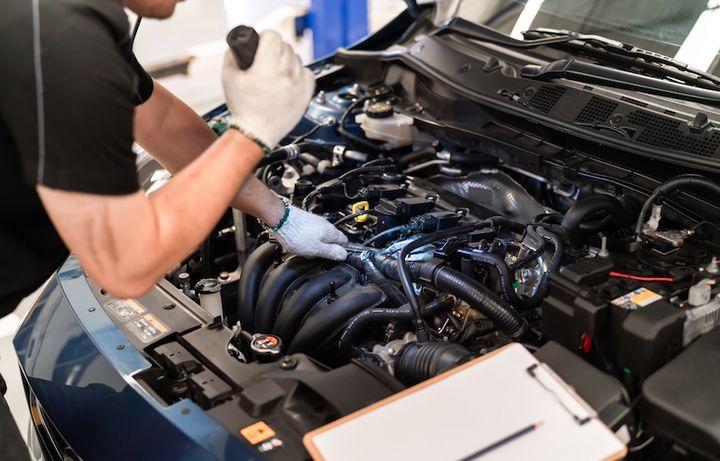Photo by Potential Filmmaker
Preventive maintenance (PM) expenses in CY-2020 were lower compared to 2019, primarily due to the pandemic-induced economic shutdown resulting in fewer miles driven as many fleet vehicles were idled.

On the flip side, companies that were deemed essential businesses saw a dramatic uptick in business activity.
“While some organizations had fleet vehicles sit idle for extended periods, other companies experienced a dramatic uptick in business volume. Each scenario influences PM strategies and there are several factors that need to be considered to both control costs and keep vehicles in top operating conditions, which requires adjusting PM schedules accordingly,” said Chris Foster, manager, truck & equipment maintenance for ARI.
Reduced fleet utilization was the key factor impacting PM costs in 2020.

“Without question, the most significant impact affecting PM costs was the widespread reduction of vehicle utilization resulting from COVID. With employees in countless industries shifting from a commuting workforce to a remote workforce, overall repair costs dropped for a multitude of fleets across most sectors,” said George Albright, director, fleet maintenance for Merchants Fleet. “However, average per repair costs increased, which can be attributed to several factors, including labor rate increases, increased utilization of mobile repair services, and COVID-related cleaning.”
The disruptions caused by the pandemic puts upward pressure on fleet PM expenses.
“PM costs per service should continue to increase, as OEMs manage through supply-chain disruptions associated with pandemic volatility. Continued labor shortages will impact multiple areas of the repair industry, as national labor statistics reflect an increase on average hours worked,” said Albright.
Other fleet subject-matter experts likewise agreed that most of the fleet-related PM disruptions that occurred in 2020 were pandemic related.

“Donlen saw PM compliance fall as fleet vehicles were grounded,” said John Wuich, VP of strategic consulting services for Donlen. A key factor causing this was the decrease in overall miles driven, which has an impact since PM intervals are typically based on a mileage and time.
“The ongoing pandemic has impacted virtually every aspect of our industry and that certainly includes PM practices. With most PM strategies built on a foundation of miles driven and/or time intervals, these important milestones have been significantly altered for most fleet operators,” said Foster of ARI.

Many fleets modified oil drain intervals to correspond to the longer OEM-recommended intervals.
“There were a number of companies that modified PM intervals to more closely align with what the recommended interval was from the OEM. In most cases, this change resulted in an increased oil change interval, which reduced overall oil change costs,” said Chad Christensen, strategic consultant at Element Fleet Management. “This has included doing additional PM services such as transmission services. Some companies are considering retaining units that had a reduced driving rate in 2020.”

During the pandemic, many fleets started to schedule PM intervals solely on the basis of miles driven.
“During the shutdown from March to August, we have seen a decrease in miles driven. In working with our customers, they do not want vehicles serviced based on mileage and time. Where most clients wanted services every six months or the mileage interval they had in place, now they are strictly looking at mileage intervals and once a year,” said Tony Hernandez, team lead, truck maintenance for Emkay. “Most vehicles have gone from 6-8 oil changes on average per year to only one or two.”
by Mike Antich
Source: https://www.automotive-fleet.com
CUT COTS OF THE FLEET WITH OUR AUDIT PROGRAM
The audit is a key tool to know the overall status and provide the analysis, the assessment, the advice, the suggestions and the actions to take in order to cut costs and increase the efficiency and efficacy of the fleet. We propose the following fleet management audit.




